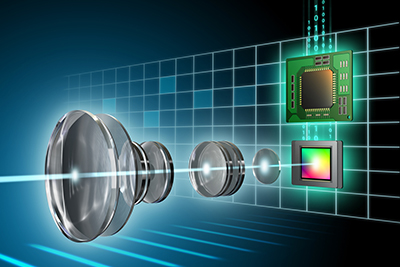
Giving machines the gift of sight used to be very expensive and complicated. In many cases where robots only had to interact with objects in a flat plane relative to the robot, 2D imaging and machine vision worked great and still does. But as robots and other automation equipment have begun to operate in a 3D space, demand for 3D imaging and 3D machine vision has risen.
Fortunately, costs for cameras have fallen. And in addition to lower costs, camera quality has increased. This is good news because 3D imaging applications require extremely reliable and accurate images. 3D imaging has helped boost performance for automation systems when it comes to part positioning, product inspection, component measurement, and code reading.
Types of 3D Vision
3D imaging gives a machine vision system not just the ability to see its environment but to calculate where an object is located and its orientation. Engineers have developed many solutions to this problem. Some offer high accuracy and others offer fast imaging. Costs and applications also determine which solution to use.
Stereo vision provides 3D information on a part based on two separate viewpoints. Each viewpoint returns its own X-Y-Z values. Once multiple features are identified on a part based on both viewpoints, the part’s location and orientation can be ascertained. Stereo vision can work with a single 2D camera that moves, making it an inexpensive choice.
Time of flight (ToF) technology uses 3D sensors to calculate how much time it takes for light to travel to a scene and back to the sensors. Z-axis information is used from each sensor to create a point cloud. The Z-resolution of time of flight sensors is lower, but frame rates are higher, making time of flight a great option for collecting real-time motion data.
Common Applications for 3D Vision
Humans are much better off having the ability to navigate their environment with 3D vision over 2D vision. Engineers know this and have long put forth the effort to equip robots with the ability to see in 3D. Robot guidance has distinct advantages when equipped with 3D. Robots can detect and navigate around obstacles in their path, as well as better avoid moving objects.
Camera manufacturers are rapidly developing 3D solutions for high-speed imaging. In applications from confocal microscopic imaging to surveillance to space exploration, 3D imaging must take place in real-time to capture essential data. New technologies like “parallel structured light” even allows multiple 3D images to be captured at once.
3D imaging is perfect for surface profiling. To make sure a surface is suitable for its intended purpose, 3D image data like shape, finish, roughness, and texture is analyzed. Surface profiling helps manufacturers deliver consistent products and reduce failures when 3D data falls within the required metrics.
Need to add 3D imaging to your machine vision application? Get an advanced 3D time of flight camera from the experts at Phase 1 Technology.
